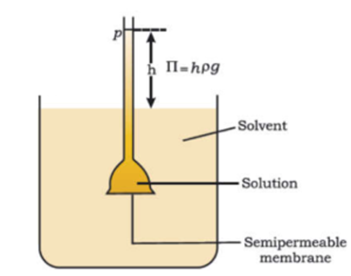Science > Chemistry > Solid State > Electrical Properties of Solids In the last article, we have studied the dielectric properties of solids. In this article, we shall study the electrical properties of solids. Electrical Conductivity: The electrical conductivity of solids is due to the motion of electron or positive holes. The conductivity due to the motion […]
Category: Physical Chemistry
Science > Chemistry > Solid State > Magnetic Properties of Solids In the last article, we have studied the magnetic properties of solids. In this article, we shall study the dielectric properties of solids. Source of Dielectric Properties of Solids: In insulators, electrons in the individual atom or ion are bound to corresponding nuclei. Hence […]
Science > Chemistry > Solid State > Magnetic Properties of Solids In this article, we shall study the magnetic properties of solids, classification of solids on the basis of their magnetic properties. Every substance has some magnetic properties associated with it. The origin of these properties lies in the magnetic moments associated with the electrons. […]
Science > Chemistry > Solid State > Defects in Crystal Structure In this article, we shall study defects in the crystal structure, sources of defects and their types. Source of Defects in Crystal Structure: At absolute zero, crystals tend to have a tendency to have a perfectly ordered arrangement. This arrangement at absolute zero represents the […]
Science > Chemistry > Solid State > Radius Ratio and its Significance The ratio of the radius of cations (r+) to the radius of the anion (r–) is known as the radius ratio of the ionic solid. The significance of radius ratio: It is useful in predicting the structure of ionic solids. The structure of […]
Science > Chemistry > Solid State > Tetrahedral Voids and Octahedral Voids In this article, we shall study two types of voids formed during hexagonal closed packing namely, a) Tetrahedral voids and b) octahedral voids. Let us consider a closed pack hexagonal packing in the first layer as shown. There are empty spaces between the […]
Packing in solids
Science > Chemistry > Solid State > Packing in solids In this article, we shall study the different types of close packing of the constituent particles in solids. The Principle of Packing in Solids: In a crystal particle (atoms, molecules or ions) occupy the lattice points in the crystal lattice. These particles may be of […]
Science > Chemistry > Solid State > Numerical Problems on Type of Crystal Structure In this article, we shall study to solve problems to calculate the atomic radius, the distance between atoms in the unit cell and to decide the type of crystal structure. Example – 01: A naturally occurring gold crystallizes in face centred […]
Science > Chemistry > Solid State > Numerical Problems on Density of Solid In this article, we shall study to solve numerical problems to find the density of solid, edge length and volume of the unit cell. Example – 01: Silver crystallizes in face centred cubic structure. The edge length of a unit cell is […]

Science > Chemistry > Solutions and Their Colligative Properties > Osmosis and Osmotic Pressure In this article, we shall study the phenomenon of osmosis and osmotic pressure. Semipermeable Membrane: A semipermeable membrane is a membrane which allows the solvent molecules, but not the solute molecules through it. Examples: Cellulosde, cellulose nitrate, animal bladder. Osmosis: The spontaneous […]